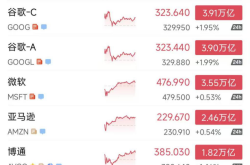How Can E-commerce Players Weather Industry Shakeouts and Navigate Market Cycles?
![]() 11/27 2025
11/27 2025
![]() 365
365
Only those who stay true to the core principles of the retail industry can thrive across market cycles.
In 2025, the 'longest-ever' Double 11 Shopping Festival concluded with a muted finish.
Tmall's full-cycle brand rankings were released with a delay on November 13th. Douyin E-commerce stopped sharing total GMV changes. Even high-profile head MCN institutions (top MCN agencies), which had previously been quite flamboyant, adopted a low-key approach this year, choosing not to disclose specific sales figures. The decline in Double 11's buzz, which became evident after platforms stopped disclosing transaction figures, signals a shift in the e-commerce market from chasing incremental growth to a stock game 'shakeout phase.'
Nowadays, many users no longer make special preparations for Double 11. Instead, they return to daily, need-based purchasing. However, as the fervor of consumption fades, how can merchants and platforms survive and seek breakthroughs in this fiercer competition to navigate through this cycle?
01. 'No More Room for Profit Concessions' Becomes the Norm for Merchants During Promotions
The original intent of Double 11 was to reward consumers with simple, direct discounts and break the retail slump in November. However, in recent years, many consumers have noticed that price reductions for Double 11 promotions have become increasingly insignificant.
Many consumers report that merchants often raise prices before promotions and then offer discounts, with some even increasing prices during the promotion period. The convoluted pricing no longer brings the thrill of 'saving more by buying more,' and complex discount and coupon rules have significantly dampened enthusiasm for promotions.
While shopping remains a primary leisure activity, consumers are becoming increasingly cautious with their spending. The Internet Marketing Report 2025 released by iResearch also notes that most consumers hold a cautious attitude toward consumption spending in 2025, with nearly half (48.6%) planning to reduce their consumption expenditures in 2025.
Unless it's a necessity or brings strong emotional value, fewer consumers are willing to pay a premium for products. Reducing discounts was once the simplest and most effective way to attract consumers. However, intense price competition and external environmental turmoil have left many merchants on the brink of 'no more room for profit concessions,' a typical manifestation of the e-commerce shakeout phase.
'Qujie Business' learned that many merchants participate in platform promotions to gain traffic exposure, only to find that selling prices must be 'deeply discounted,' sometimes as low as 40-50% off, resulting in greater losses with more sales.
Additionally, the cost pressures from stricter 'e-commerce taxes' and rising shipping fees have made it even harder for merchants to lower prices.
In June, the State Council issued the Regulations on the Submission of Tax-Related Information by Internet Platform Enterprises, bringing all e-commerce platform operators into a 'data transparency' system. This makes it difficult for merchants to exploit loopholes like 'not issuing invoices' or 'underreporting income.' In July, guided by the State Post Bureau, shipping fees across the country began to rise to combat 'internal competition.'
Nowadays, merchants are adopting more cautious business strategies, evaluating the cost-effectiveness of each investment, and no longer sacrificing profit margins solely for sales volume. An e-commerce analyst noted that after the implementation of the 'e-commerce tax' this year, practitioners have become more focused on 'effective orders' and less enthusiastic about inflating data for GMV. The era when Double 11 alone could sustain second-half sales is over. Compared to strict price controls, brands and platforms are gradually returning to steady, day-to-day operations.
02. Platform Diversification Tests Cash Reserves
In fact, it's not just merchants facing difficulties; e-commerce platforms are also under challenge.
From the perspective of e-commerce platforms, with incremental demand no longer significant, major platforms have begun to 'fight across borders.' While they strive to 'defend their online stronghold,' they also send troops to compete in the offline retail territories of rivals, leading to intense competition.
Especially this year, few anticipated that JD and Taobao would sequentially venture offline, entering Meituan's core areas such as food delivery and reviews under the banner of instant retail. Although after more than half a year, price subsidies in the food delivery sector continue, even resulting in instances where delivery prices are significantly lower than dine-in prices, exerting pressure on offline businesses, such subsidies are not sustainable.
While all parties attempt to quickly build scale effects and user habits through capital advantages in the short term to secure pricing power after the market stabilizes, this 'arms race' will inevitably consume substantial cash reserves before a winner emerges.
Moreover, has the instant retail battle effectively driven traffic to e-commerce businesses through food delivery? At least for now, it's not fully proven.
Additionally, JD has made investments in hotels, tourism, and culture, as well as new energy vehicles, actively seeking a second growth curve. Alibaba, on the other hand, is advancing in both food delivery and AI, with its AI investments far exceeding those in food delivery, planning to invest over 380 billion yuan in the next three years. This positions Alibaba in multi-front competition with rivals like Meituan, ByteDance, and Tencent.
The competition continues, and the outcome remains uncertain. However, the diversified investments (such as instant retail and AI) made by e-commerce platforms in pursuit of growth undoubtedly pose a significant test to their cash flows. If these high-intensity capital expenditures cannot be quickly transformed into sustainable profit models in the short term, they will accelerate profit depletion, hastening the industry's shakeout phase.
So, for the e-commerce industry, besides diversification, are there other paths to navigate through cycles?
03. Is Focusing on Core Businesses More Essential to Navigate Through Cycles?
From a business history perspective, situations like the 'shakeout' in the e-commerce industry are not uncommon. However, the effectiveness of diversification strategies in navigating through cycles is questionable, as classic cases mostly confirm that focusing on core businesses is the right approach.
In the broader retail sector, Costco, the largest U.S. chain of membership-based warehouse stores, is renowned as the 'King of Composure' in the retail industry. Despite enduring multiple economic crises, e-commerce disruptions, and shifts in consumer habits, Costco has consistently adhered to reducing friction in supply-demand matching and resisted blind expansion. With its SKU count maintained around 4,000, it selectively offers only the most popular items among members, leveraging massive single-item sales volumes to reduce costs. This strategy of 'depth over breadth' has made it a global retail benchmark.
Conversely, there are numerous counterexamples of companies that attempted to rely on diversification for salvation but instead fell into crisis. For instance, Sears, a pioneer in mail-order retail, chose diversification when facing difficulties, indiscriminately expanding business channels and even venturing into real estate, ultimately eroding its decades-built retail barriers.
Beyond the retail sector, this business wisdom applies more broadly. For example, during the global oil crisis, when automakers sought new businesses to compensate for slowing automotive industry growth, General Motors acquired Houston Aircraft, and Ford ventured into finance, both suffering setbacks. In contrast, Toyota, focused on production process innovation, emerged as a global automotive industry leader.
Another example is GE, which, under post-Welch leadership, faced growth pressures and chose diversified expansion and 'detachment from the real economy,' ultimately leading GE Capital to near-collapse due to risk exposure, almost dragging down the entire group. These cases illustrate that seemingly self-preserving diversification expansions can actually push companies into more precarious situations.
The lessons from these business cases are not difficult to understand. Using companies from 'Built to Last' as samples, media research on how companies navigate economic cycles found that 12 out of 15 sample companies relied on returning to the essence of their core businesses for sustainable development. Continuously growing companies like Panasonic, Johnson & Johnson, and Disney have succeeded by consistently focusing on their core businesses and resisting temptations from market trends, merely making adaptive adjustments in product structures and production modes.
Of course, the shakeout phase in the e-commerce industry will inevitably involve pain. Even with lessons from the past, many companies may still repeat the mistakes of their predecessors; after all, eliminating bubbles and returning to business fundamentals requires time and process. However, this harsh journey will also filter out players with truly solid cash flows, exceptional operational efficiency, and sustained value creation capabilities. For the e-commerce industry, those who can survive with a 'long-term perspective' may welcome a healthier and more sustainable future after the cycle.






